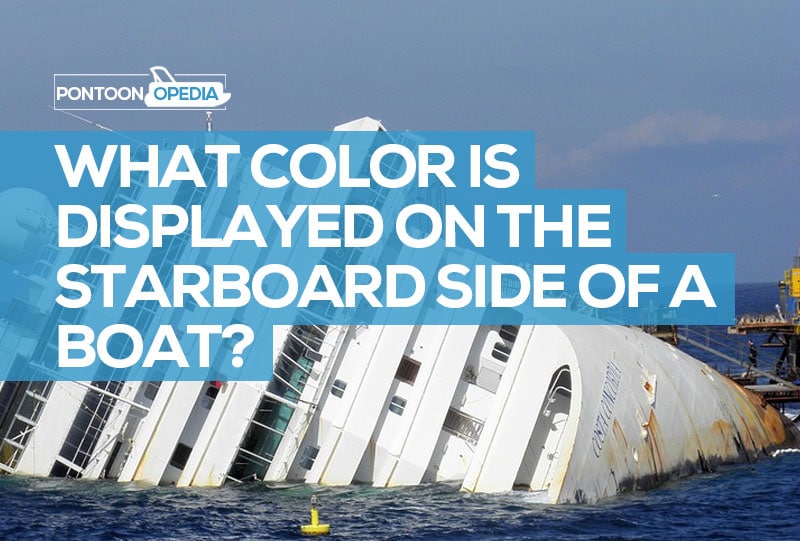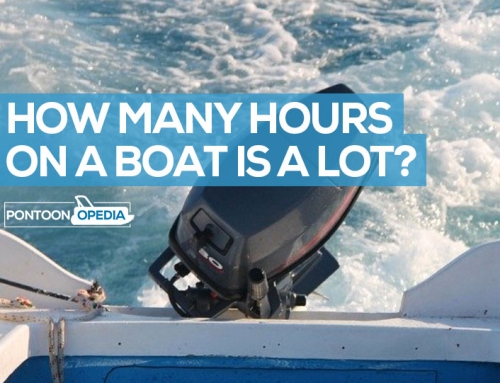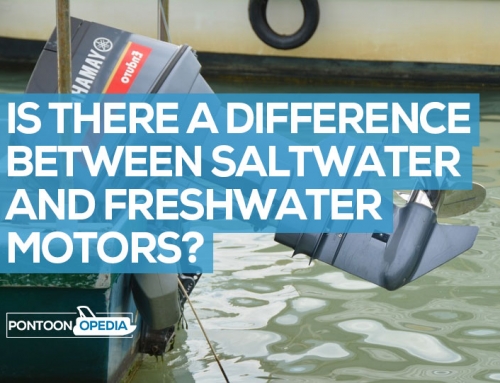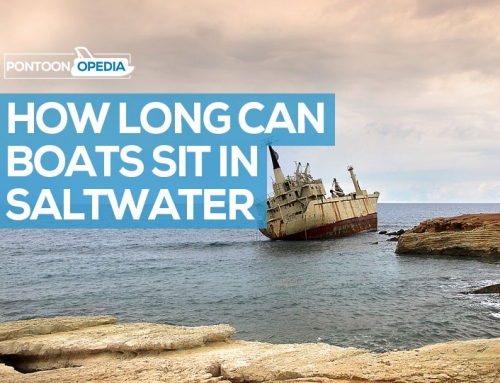Have you ever wanted to know what color is displayed on the starboard side of a boat or what the correct port and starboard colors are? It might be that you need the answer to this question for a boating exam, or it could be that you want to add navigational lights to your boat in the correct way. Here’s the short answer:
In terms of port and starboard colors, the color green is displayed on the right-hand side (starboard) side of a boat or ship, with the color red being displayed for navigational purposes on the left-hand (port) side of a boat or ship.
Table of Contents
What color light is displayed on the starboard side of a ship?
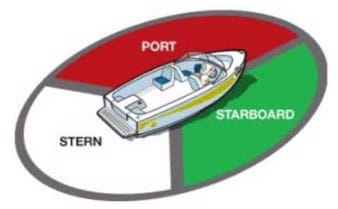
You can see how this works in practical terms in the image you see here.
Port and starboard colours
Want to know what colors represent port and starboard? Read the quick and easy to understand guide below.
What color is the port side light on a boat?
A boat or ship’s port (left) navigational light will always be red.
What color is the starboard side light on a boat?
A boat or ship’s starboard (right) navigational light will always be green.
What side of a boat is starboard?
Starboard is the common nautical maritime term for the right-hand side of a boat, ship, or any other type of vessel on the water – when you are facing in a forward direction.
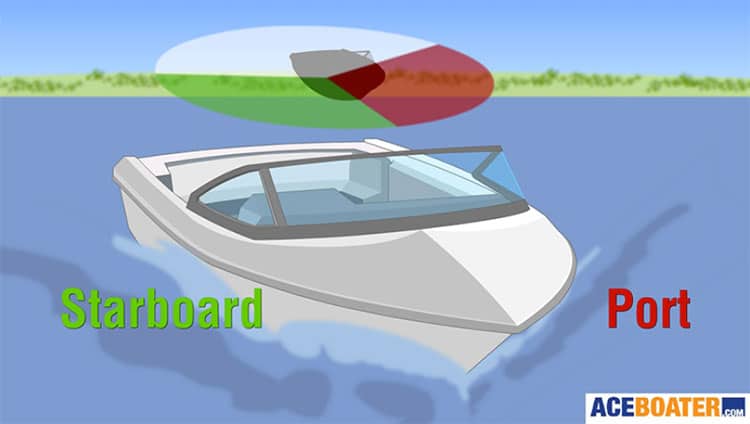
Image from the excellent AceBoater.com website.
What side of a boat is port?
And port is the left-hand side of a boat, also when you are facing in a forward direction.

Image from the excellent AceBoater.com website.
What are the 4 sides of a boat?
As well as starboard, which is the right-hand side, there are also maritime names for the left, back, and front of a ship. You can read those below:
- Bow: This is the front and most forward part of a ship.
- Port: This is the left-hand side of the ship when you’re sat looking forwards.
- Starboard: This is the right-hand side of the ship when you sat looking backwards.
- Stern: This is the rear section of a ship also known as aft.
Why is port left, and starboard right?
Ever wondered how exactly did port and starboard get named in this way and where the historical naming origins came from?
Starboard references a historical practice of placing a steering oar on the right-hand side of a ship rather than using a centrally placed rudder (which used to be in the centerline). It is was the side of the boat from where it was steered.
The oar would be attached vertically to the right-hand side of the vessel, towards the back. It is believed that the right-hand side of the ship was chosen, purely because the majority of people (and sailors) are predominantly right-handed themselves.
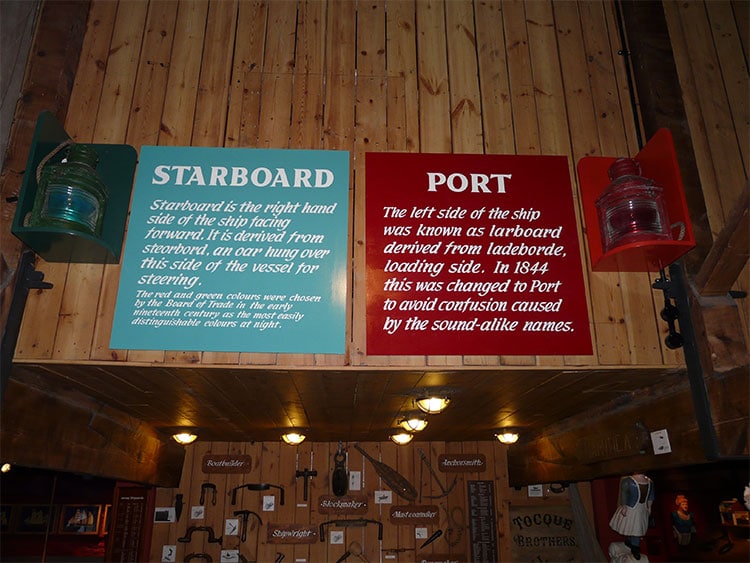
This photo from a maritime museum shows port and starboard naming origins.
The starboard originates from the Anglo Saxon word for a side steering oar, “steorbord”. The literal translation of that word means “the side on which a vessel is steered”.
Using this name meant the sailors back in the day would quickly know which side of the ship was being referenced without any confusion arising. They would all know that if someone shouted “go steorbord” or “go starboard” that meant get over to the side where the steering oar is.
Simple!
And as for port?
Well, that’s the left-hand side of the ship but the naming origins are a little bit murkier.
What we do know is that in the olden days (think pirates and explorers!) the Olde English name for the left-hand side of a ship was “baecbord”, pronounced “back board”.
It was so called because on larger vessels, the helmsman at the front would have to hold his oar for steering firmly with both hands, with his back facing towards the left side of the ship.
That name was also interchangeable with “laddeboard” pronounced “ladder board”. The term came from the word “laden”, meaning to load, and “board” being the side of the ship.
As you can guess, this was referring to the side of the boat which was set against a dock side, so that equipment, men, and supplies could be easily loaded onboard. In the 16thcentury the name mutated into “larboard” which rhymed with “starboard”.
Boats and ships were docked that way so that the steering oar side of the ship (i.e. starboard side) was not at risk of damage when docking, plus is was easier to load without the steering oar getting in the way.
The left-hand side was in simple terms the side of the ship that faced the dock or the shore.
But this caused problems…
Larboard and starboard sound very similar, meaning sailors could easily misunderstand what direction or command was being given at sea. You can imagine how that could have disastrous consequences, especially in a battle or stormy weather!
Did You Know? The word “posh” comes from the acronym P.O.S.H, which stands for “Port Out, Starboard Home”). This came from employees on British cruise ships dating back to the Titanic times, who used it to refer to the cabin arrangements for wealthy passengers wanting the sunny (southern) side of the boat on Atlantic crossings out to the United States and return trip.
And so, by the 19thcentury, the word “port” was now being commonly used for the left-hand side of the boat to rid sailors of this confusion. And in truth, the port side of the boat was always the one that was docked into a harbour so easy enough to remember even for the most forgetful sailor!
By 1844, the word port was officially recognised by the all-conquering British Navy, and other sailors and navies across the world followed this lead, including the US Navy a few years later.
Watch the video below to see a great explainer with images about this historical way for how they came up with port and starboard.
How to remember port and starboard
It won’t take you long to remember which is which. The way in which I did it when I started out sailing and boating was to simply remember that port has 4 letters, as has the word left. That was easy enough for me to remember and get used to.
Another way you can do it is to use the following mnemonic phase:
“Port wine should be left alone when it is red” – (e.g. port (left) red, so starboard (right) green).
I’ve put together more tips on remembering the different sides with this 1 simple trick.
The last word…
I hope that you have found this guide to port and starboard colours useful. If you are taking a boat safety course or class, I wish you all the success with it. To find more advice, take a look at the Pontoonopedia blog as there are more questions and answers in there relating to port and starboard colours.

